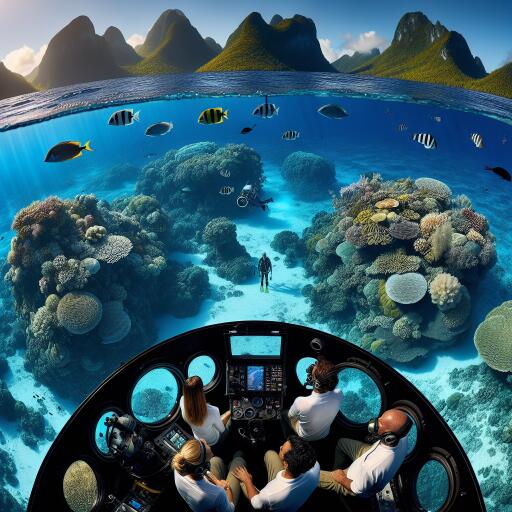
Exploring the Untouched Wonders of the Ocean: Discoveries on High-Seas Seamounts
In an era where the world desperately seeks untouched natural environments, a recent scientific expedition brings hope and marvel from the depths of our oceans. A multidisciplinary team of researchers has embarked on an exploratory mission to one of the most remote and biologically diverse regions of our planet – the Salas y Gómez Ridge. This initiative has led to the astonishing discovery of 160 species, illuminating our understanding of oceanic biodiversity and underscoring the critical need for conservation in these vast, largely unexplored territories.
The Salas y Gómez Ridge, stretching toward the enigmatic Rapa Nui, or Easter Island, has long captivated scientists with its ecological potential. The expedition, spearheaded by a collaborative team of esteemed scientists, ventured across this secluded underwater ridge to investigate the thriving life forms that call it home. Among the myriad of organisms cataloged, an exciting revelation was the documentation of possibly 50 species previously unknown to science. This significant finding not only enriches our biodiversity archives but also emphasizes the necessity of safeguarding such pristine ecosystems.
The expedition’s capture of life beneath the waves included a dazzling array of squids, fishes, mollusks, starfish, glass sponges, sea urchins, and more. Among these, perhaps the most groundbreaking finding was the Leptoseris coral, known for its resilience in deep waters and dependence on photosynthesis, now recorded at unprecedented depths. The campaign marks a continuous effort to understand and protect the underexplored Nazca and Juan Fernandez Ridge seamounts, following a preceding expedition that hinted at the existence of 100 novel species.
Diving into the depths of the Salas y Gómez Ridge, the team meticulously studied 10 seamounts and two islands over a 40-day research voyage. The individual seamounts revealed unique ecosystems, from glass sponge gardens to deep-sea coral reefs, hinting at the ecological uniqueness and the critical need to protect these habitats as a whole. This expedition not only contributes to the scientific knowledge but also paves the way for future conservation efforts, potentially aiding in the establishment of a high-seas marine protected area around this ecological treasure trove.
The significance of preserving entire ecosystems, rather than select areas, was a recurring theme emphasized by the research team. In light of their findings, the possibility of establishing new marine protected areas (MPAs) on the high seas, particularly around the Salas y Gómez Ridge, has gained momentum. This initiative is crucial given the current considerations for the ridge as a candidate for MPA status under the impending ratification of the UN High Seas Treaty. With enough scientific backing and international support, these areas could obtain the protection they critically need, safeguarding their biodiversity for future generations.
Mapped over the course of the expedition were 78,000 square kilometers, including six previously uncharted seamounts. These habitats support a wide array of migratory species, such as whales, sea turtles, and sharks, underscoring the ecological significance of this area not just locally but globally. The profound biodiversity unveiled by the team’s work highlights the sheer amount of our oceans that remains unknown and unleashes a clarion call for global efforts to explore and protect our blue planet’s hidden corners.
Integral to the expedition was the combination of traditional knowledge and modern scientific innovation. Community members from Rapa Nui participated hands-on, bridging cultural exchange and enriching the scientific endeavor with their ancestral oceanic wisdom. This collaboration underlines the importance of incorporating indigenous knowledge in modern scientific research and conservation strategies, fostering a holistic approach to understanding and preserving our natural world.
A testament to the synergy of collaboration and technological innovation was the testing of new camera technologies by engineers on the expedition. Advancements such as hyperspectral and stereo camera systems promise to revolutionize how we study and understand the complex biodiversity of the seafloor, making high-detail surveys more accessible and insightful.
The relentless pursuit of knowledge and the drive to protect our planet’s last unspoiled sanctuaries lead us to these remote, underwater mountains. As we stand on the brink of new discoveries and conservation achievements, the journey of the Salas y Gómez Ridge expedition shines a beacon of hope. It not only enlightens our understanding of the ocean’s mysteries but also ignites a global conversation on the imperative to protect our marine biodiversity for the enduring health of our planet.





Leave a Reply